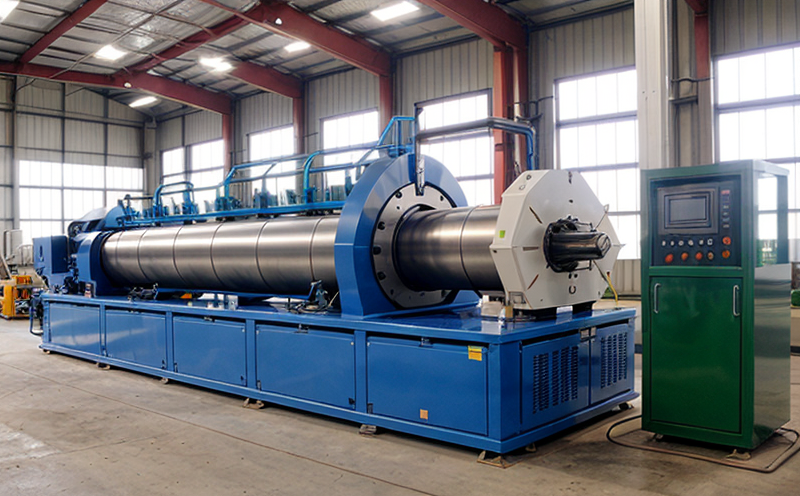EN 15347 Sampling of Waste for Recycling Efficiency Studies
The European Standard EN 15347 provides a harmonized method to sample waste materials intended for recycling. This standard is critical in optimizing the recycling process, enhancing material quality, and ensuring compliance with environmental regulations. Proper sampling ensures that representative samples are obtained, which are essential for accurate analysis of the recyclability potential of waste streams.
The first step in any recycling efficiency study involves obtaining a sample that accurately represents the characteristics of the waste being recycled. This is where EN 15347 comes into play. The standard outlines detailed procedures to ensure that samples are collected, preserved, and analyzed in a consistent manner across different facilities. By adhering to this standard, laboratories can provide reliable data for recycling process optimization.
The sampling procedure described in EN 15347 is designed to minimize bias and ensure that the sample accurately reflects the characteristics of the waste stream. This includes considerations such as the type of container used for collecting the waste, the manner in which it is filled, and the method by which subsamples are taken from the main sample. The standard also provides guidance on how to handle different types of waste materials, including hazardous substances.
One key aspect of EN 15347 is its emphasis on ensuring that samples are representative of the entire batch or lot of waste being recycled. This is achieved through a combination of statistical sampling methods and physical sampling techniques. By following these guidelines, laboratories can ensure that their findings are robust and reliable, providing valuable insights into the recyclability potential of various materials.
Another important feature of EN 15347 is its flexibility in accommodating different types of waste streams. Whether it’s paper, plastic, metal, or mixed waste, this standard provides a framework for collecting samples that can be used to evaluate the efficiency of recycling processes. This makes it an invaluable tool for quality managers and compliance officers looking to ensure that their facilities are meeting regulatory requirements.
The standard also addresses issues related to sample preservation and transport, which are crucial in maintaining the integrity of the sample throughout the testing process. Proper handling of samples can significantly impact the accuracy of test results, making this aspect of EN 15347 particularly important for R&D engineers and other technical experts.
In summary, EN 15347 provides a robust framework for sampling waste materials intended for recycling. By ensuring that representative samples are collected, preserved, and analyzed in a consistent manner, this standard enables laboratories to provide reliable data for recycling process optimization. This is essential for quality managers, compliance officers, R&D engineers, and other professionals involved in the recycling industry.
For those looking to implement this standard, it is important to note that proper training and adherence to the specified procedures are critical. Failure to follow these guidelines can lead to biased or inaccurate results, which could have significant implications for both the environment and the bottom line of waste management facilities.
Applied Standards
| Standard Name | Description |
|---|---|
| EN 15347 | This standard provides a harmonized method to sample waste materials intended for recycling. |
Benefits
- Ensures representative sampling of waste streams
- Improves the accuracy and reliability of recycling process optimization
- Aids in meeting regulatory compliance requirements
- Promotes the efficient use of resources by improving material quality
- Facilitates accurate evaluation of recyclability potential
- Enhances the overall sustainability of waste management practices
Why Choose This Test
Choosing EN 15347 ensures that your laboratory or facility adheres to a recognized international standard, thereby enhancing the credibility and reliability of your test results. This standard is particularly valuable for those involved in waste management and recycling processes as it provides a structured approach to sampling that can significantly improve the accuracy of analysis.
By using EN 15347, you are ensuring that your samples are collected and analyzed consistently across different facilities. This consistency is crucial for comparing data from various sources and making informed decisions about process improvements. Additionally, adhering to this standard can help your facility meet stringent environmental regulations, thereby reducing the risk of legal issues.
The structured approach provided by EN 15347 also allows for more efficient use of resources. By ensuring that only representative samples are collected, you can avoid unnecessary testing and reduce waste in your operations. This not only saves time but also helps to minimize costs associated with inefficient processes.
Furthermore, the standard provides a framework for evaluating the recyclability potential of various materials, which is essential for optimizing recycling processes. By understanding the characteristics of different waste streams, you can make more informed decisions about how to process and reuse these materials effectively. This leads to improved resource management and reduced environmental impact.
In conclusion, choosing EN 15347 not only enhances the accuracy and reliability of your test results but also provides a structured approach to sampling that can significantly improve the efficiency of waste management practices. By adhering to this standard, you are ensuring that your facility is meeting the highest international standards for recycling process optimization.





